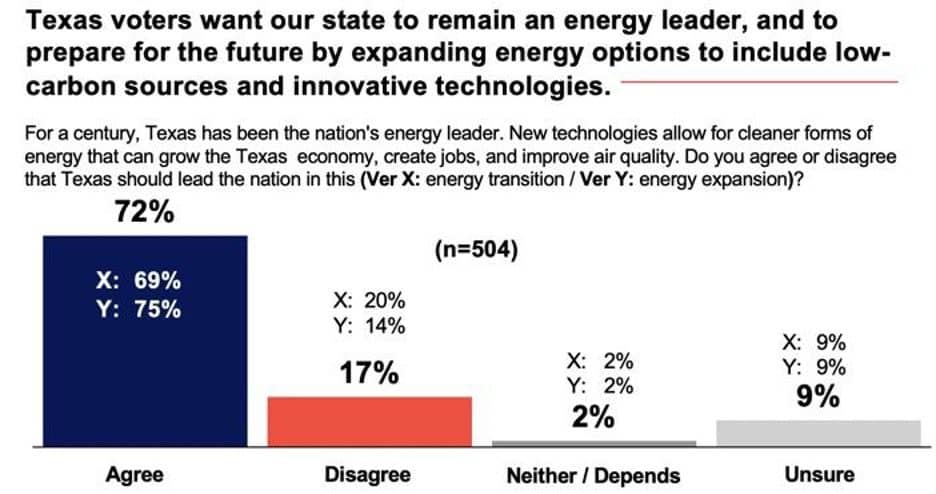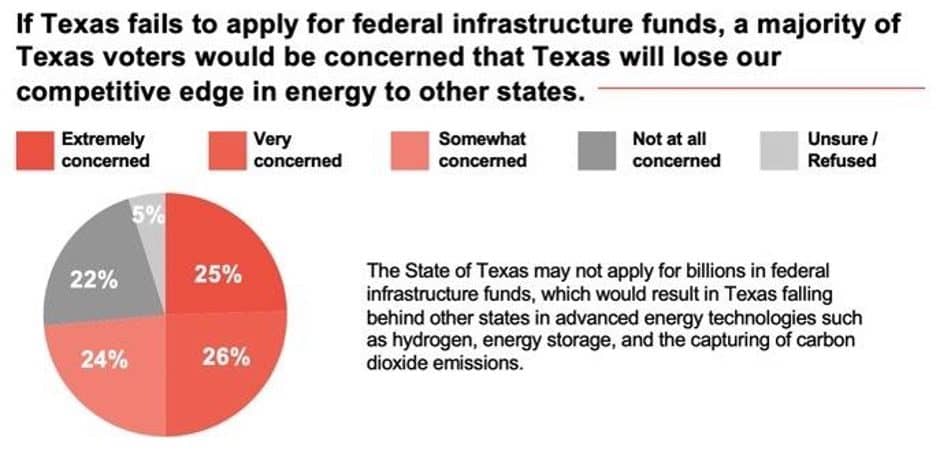The following testimony was submitted by Texas 2036 Senior Policy Advisors Jeremy Mazur and Rob Orr to the House Committee on Environmental Regulation on May 25, 2022.
What to Know:
- Texans support an energy expansion that includes hydrogen.
- Texas’ workforce and infrastructure assets support hydrogen development.
- Hydrogen fuel cell vehicles can expand the state’s zero emission fleet.
- Texas Emissions Reduction Program (TERP) alternative fueling facilities program grant limits should be evaluated if they adequately offset hydrogen fueling infrastructure costs.

Background and Data
Texas Voter Poll Results
Texas 2036 views hydrogen development and deployment as a critical pillar to Texas’ energy expansion. Here, oil and gas remain significant contributors to the state’s energy portfolio as additional sectors, including hydrogen, carbon capture, geothermal, and other sources of clean energy are added to the mix. According to our recent Texas Voter Poll, 72% of voters support Texas leading the nation in an energy expansion that includes new technologies, including hydrogen, that allow for cleaner forms of energy that can grow the economy, create jobs, and improve air quality.
Just as Texans are supportive of our state leading the nation in an energy expansion, they are concerned that Texas may lose this competitive edge to other states. Towards that end, the Texas Voter Poll found that 75% of voters are concerned that Texas may not apply for new federal funding opportunities for hydrogen, carbon capture, and energy storage, placing Texas behind efforts made by other states.

Combined, these polling data point towards Texas voters’ strong interest in our state’s continued energy leadership and willingness for new and innovative technologies that both expand our energy portfolio while reducing emissions.
Texas Emissions Reduction Program & Hydrogen
Hydrogen is fast becoming a promising, less emissions-intensive energy source. Hydrogen energy is proven as a stored energy carrier, fuel for transportation, and as a feedstock to produce ammonia. Currently, more than 60% of U.S. hydrogen pipelines and 30% of the world’s hydrogen pipelines are in Texas. Like liquefied natural gas (LNG), hydrogen can be stored for export. And Texas’ robust port infrastructure positions the state as a leading hydrogen exporter. In addition, innovations in hydrogen-powered long-haul trucking and the use of liquefied hydrogen in aerospace rocket fuel create opportunities for future industry growth.
TERP provides subsidies to eligible individuals, businesses, or local governments to reduce emissions from polluting vehicles and equipment. To achieve these stated goals and improve air quality in areas of non-attainment a diversified zero emission vehicle fleet is key, and hydrogen should be part of that conversation.
Policy Recommendations
The state should evaluate the grant caps within TERP’s alternative fueling facilities program and if they hinder the deployment of zero emission fueling infrastructure.
